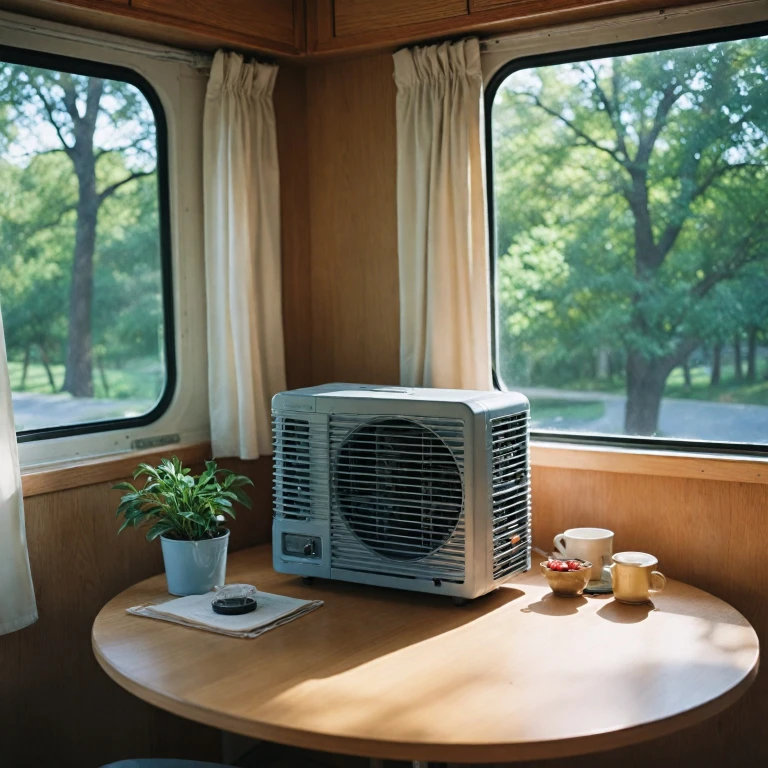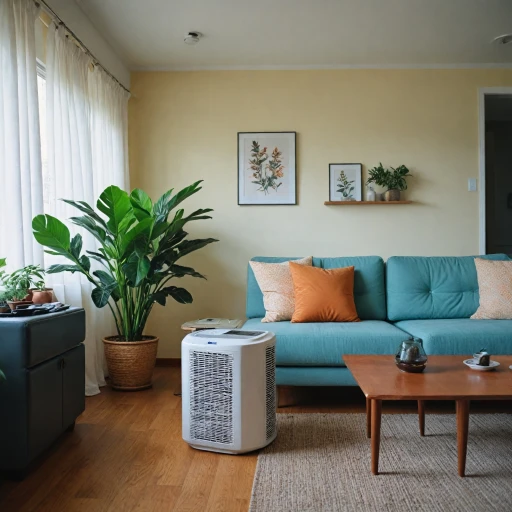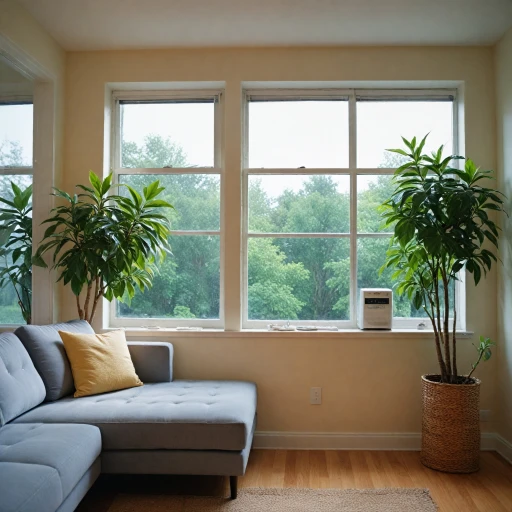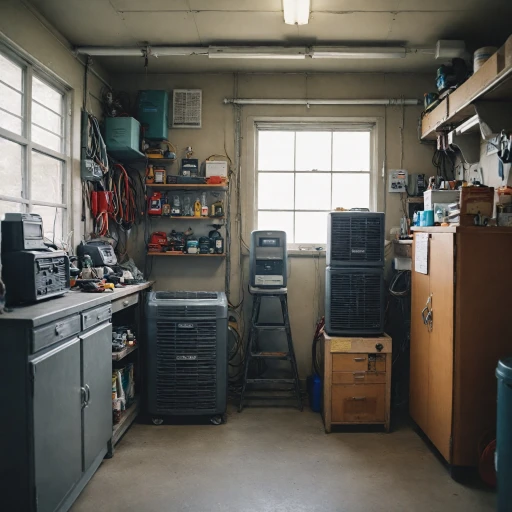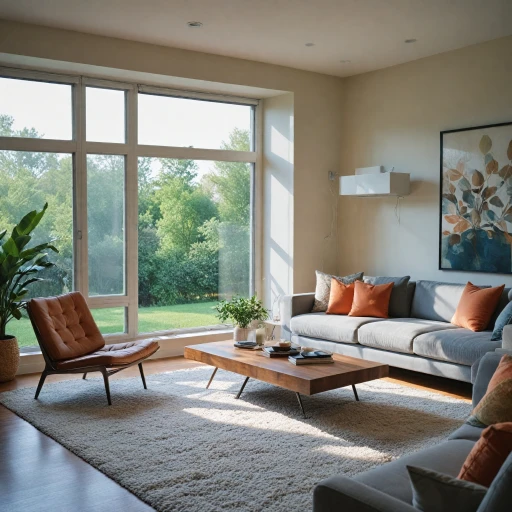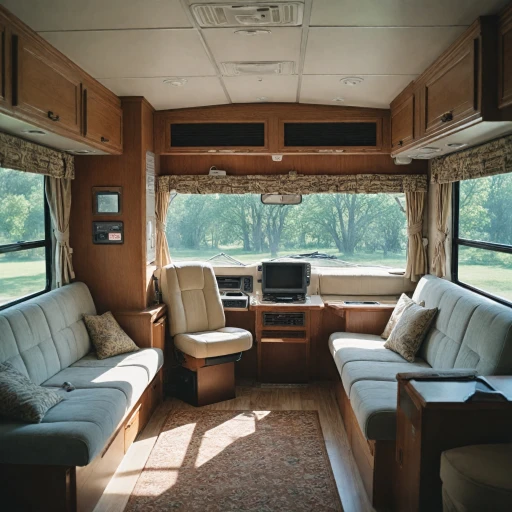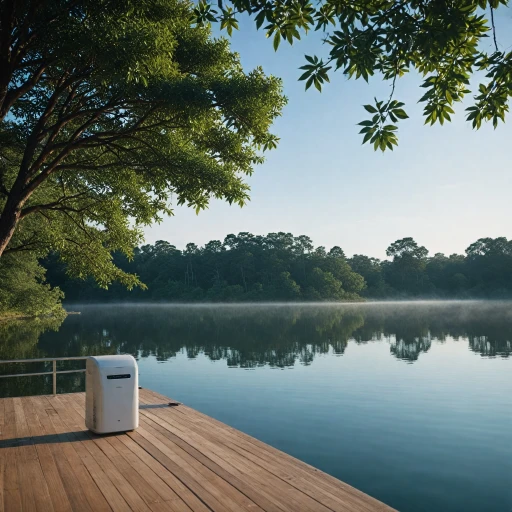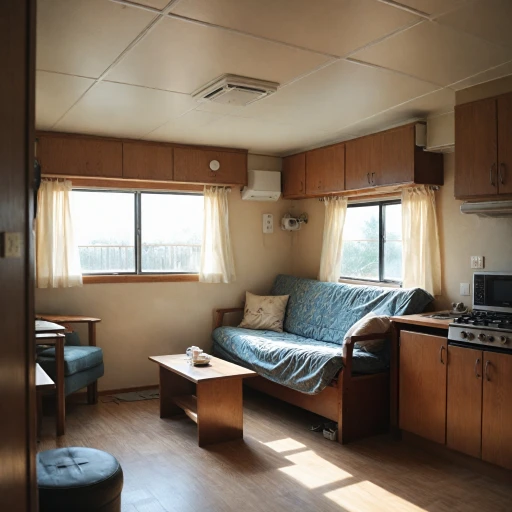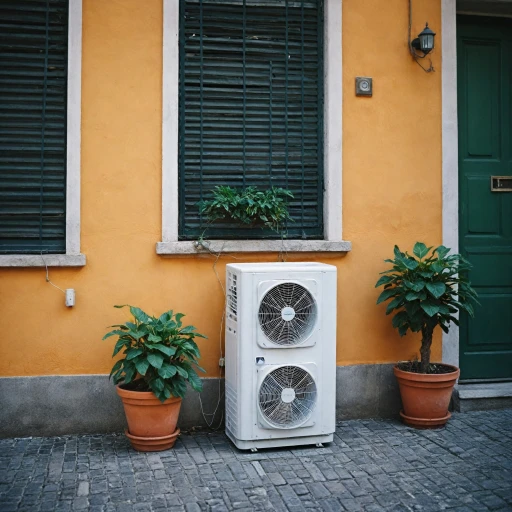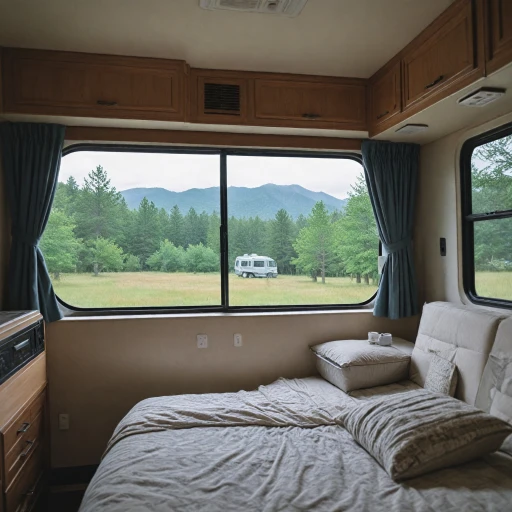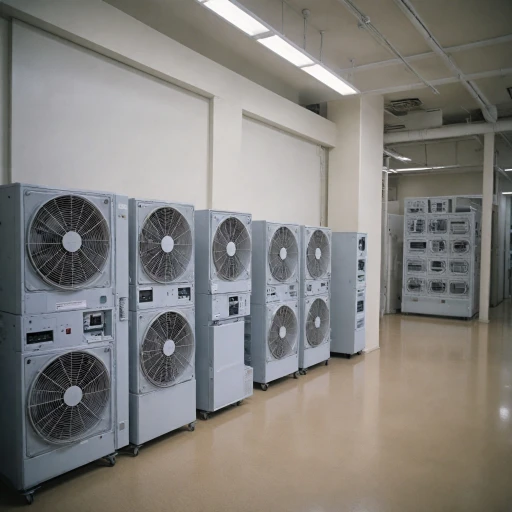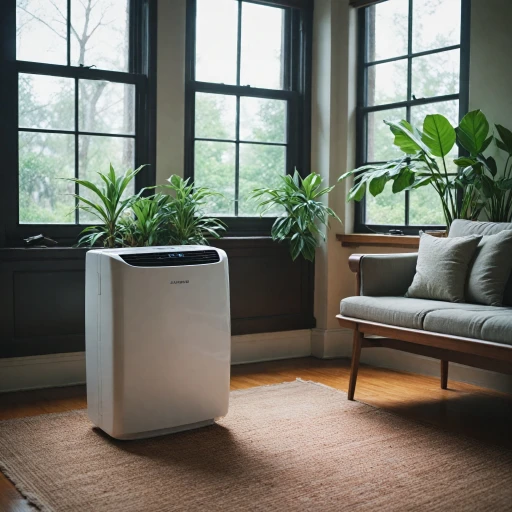
Understanding Portable Air Coolers for RVs
The Basics of Portable Air Coolers
When looking into portable air coolers specifically for RVs, it's essential to understand what sets them apart from traditional air conditioners. These cooling units are designed to be compact and efficient, perfect for the limited space and mobility of an RV. Portable air coolers, often portable evaporative coolers, stand out due to their unique cooling method. Unlike typical air conditioning systems that rely on refrigerants and compressors, evaporative coolers utilize water and air through a cooling fan to reduce temperature, making them an eco-friendly option. This "swamp cooler" mechanism draws warm air over water-saturated pads, providing refreshing cool air in return. It's important to note the influence of environmental conditions on these units. Ideal results are seen in drier climates where lower humidity levels allow for efficient evaporation and heat reduction. If you are camping in a more humid region, performance may slightly vary, which is worth considering when assessing power and cooling capacity needs. To make an informed decision, explore various models that fit your RV's requirements. This includes evaluating the room size or BTU needs, which help determine the unit's cooling efficiency. Portable units come with varying power speeds, so assessing your usual climate and camping preferences can guide your choice. Discover more about the best outdoor portable air coolers for your comfort, offering insights into maximizing your RV's cooling setup.Key Features to Look for in a Portable Air Cooler
Essential Features to Consider for Optimal Cooling
When selecting a portable air cooling unit for your RV, there are several critical features to evaluate to ensure efficient and effective performance. These elements will determine how well the portable air conditioner or evaporative cooler serves your space and environmental needs.- Cooling Capacity and BTU Rating: A higher BTU (British Thermal Unit) rating reflects a more powerful cooling capacity. It's vital to match the unit's cooling power with the size of your RV. A rating that is too low may not effectively cool your space, while one that is too high could lead to unnecessary energy consumption.
- Water Tank and Efficiency: For evaporative coolers, the size of the water tank affects both the cooling duration and effectiveness. A larger tank means less frequent refilling and often better long-term cooling performance. Additionally, assessing the unit's efficiency in how it utilizes water can help save costs while maintaining cool air circulation.
- Fan Speeds and Cooling Options: Multiple fan speeds and cooling settings provide flexibility for different climates and personal preferences. This versatility is essential, especially for RVs that travel through varying terrains and weather conditions. Look for units with adjustable speeds, oscillation options, and personalized cooling modes.
- Portability and Weight: Since RV space is limited, the weight and portability of the air conditioner or cooler are crucial. Portable units should be easy to maneuver and compact enough for storage when not in use. This feature becomes significant during camping trips where space might be even more constrained.
- Noise Level: Consideration of the noise level is important for comfort during use. Units with quiet operation are favored, especially in sleeping areas or small living spaces where sound can be more noticeable.
Installation and Maintenance Tips
Easy Setup and Upkeep: Ensuring Optimal Performance
Installing a portable air conditioner or evaporative cooler in your RV doesn't have to be a daunting task. With the current advancements in design, most portable units are engineered for hassle-free installation and minimal setup. Begin by considering the power requirements of your cooling unit. Ensure that your RV's power supply is compatible with the unit's specifications to prevent issues while camping.
Next, positioning matters. For optimal cooling, place the portable unit near a window or a door to allow proper ventilation and airflow. This setup enhances the cooling capacity of the unit, ensuring efficient circulation of cool air throughout the room. For units with a water tank, such as swamp coolers or evaporative coolers, maintaining optimal water levels will ensure consistent cooling performance. Regularly check and refill the tank as needed.
When it comes to maintenance, regular cleaning is a key factor. Most mini air conditioners come with removable filters, making them easy to clean. A simple rinse under water can prevent dust build-up and maintain air quality. For evaporative air coolers, ensure that the pads are moist adequately to guarantee efficient operation. Periodic checks of the fan's condition can also prolong the unit's lifespan and keep your air conditioner in peak condition.
Lastly, keep an eye on the manufacturer's instructions for seasonal storage tips, ensuring your portable air conditioner is ready and functioning optimally when needed again in the warmer months. Understanding these basic principles of installation and maintenance ensures your portable air cooling solution offers efficient and reliable service in your RV. For further insights on cooling systems, explore our detailed guide on the benefits of a 4000 BTU portable air conditioner.
Comparing Top Portable Air Cooler Models
Model Comparisons Based on Cooling Capacity and Features
When comparing top portable air cooler models for your RV, you'll want to focus on the cooling capacity and essential features that align with your needs. Portable units differ significantly, from the cooling power measured in BTUs to the fan speeds and water tank sizes. Here's a look at what to consider:
- Cooling Capacity: The BTU rating is a critical metric. Models with higher BTUs can cool larger spaces more efficiently. If your RV is on the larger side, consider a unit with at least 8,000 BTU.
- Evaporative vs. Traditional Air Conditioners: While traditional portable air conditioners use refrigerants, evaporative coolers, also known as swamp coolers, work by using water to cool air. Keep in mind they perform best in dry climates.
- Mini Air Coolers for Small Spaces: If your RV space is limited, mini air coolers might be suitable. They are compact yet can provide substantial cooling for their size.
- Fan Speed and Settings: The more speeds a unit offers, the better control you have over the cool air distribution. Look for models with adjustable fan speeds to tailor the cooling to your comfort level.
- Water Tank Capacity for Evaporative Models: Larger water tanks mean longer cooling time before a refill is needed, which is essential for extended camping trips.
- Noise Levels: Noise can be a deciding factor, especially for light sleepers. Check user reviews to gauge how quiet each unit operates under different settings.
Energy Efficiency and Price Considerations
Budget and cost-efficiency are significant factors when deciding on a portable air conditioner or cooler. While upfront price is important, also consider the cost of power consumption over the unit's lifespan:
- Energy Usage: Evaporative coolers generally use less electricity compared to traditional portable air conditioners. However, the cooling capacity might also be lower.
- Current Price vs. Long-term Investment: Sometimes paying a bit more initially for an efficient model can save on energy costs over time. Look for units with energy-saving modes or Energy Star ratings.
Understanding the key features and comparing them against the cost can lead you to the best cooler for your camping adventures. Evaluate these aspects carefully to select a portable air cooler that matches both your cooling needs and budget.
Budget Considerations and Cost Efficiency
Assessing Your Budget for a Portable Air Cooler
Investing in a portable air cooler for your RV doesn’t have to break the bank. Understanding your budget and aligning it with cost efficiency can help ensure you make a financially savvy decision, finding the best unit that meets both your cooling needs and budgetary constraints.
When it comes to air coolers and portable air conditioners, prices can vary significantly based on individual unit features and capabilities. Here's what you should consider:
- Cooling Capacity: The cooling capacity of a unit, measured in BTUs, directly affects its price. Higher BTU ratings mean better cooling for larger spaces but also higher costs. Make sure you match the BTU requirements to the size of your RV.
- Evaporative Coolers: Often referred to as swamp coolers, these units can be a more budget-friendly option compared to traditional air conditioners. They use water evaporation to cool the air, making them efficient and economical in dry climates.
- Fan Speeds & Modes: Units with multiple fan speeds and modes might have a higher price tag, but they allow greater flexibility in tailoring the airflow and cooling power to suit your needs.
- Brand Reputation: Consider the reviews and ratings from other RV owners. A unit with consistent 5-stars on cooling efficiency and durability, even at a higher initial cost, can save money over time with less maintenance and improved energy efficiency.
- Portable Units: Smaller, mini air conditioners and fan portable units often cost less up front and can be ideal for smaller areas or camping trips.
Usually, the current price will reflect the unit's specification, including its cooling technology—be it traditional or evaporative air cooler style. Many RV owners find that what seems like a high price initially often evens out when considering the comfort and reliability these units provide in the long run.
User Experiences and Recommendations
Insights from Fellow RVers
When it comes to choosing a portable air conditioner or cooler for your RV, real-world experiences can provide valuable insights. Many users have shared their feedback on different brands and models, helping to outline the pros and cons you might encounter. Commonly noted strengths of these portable units include their ability to deliver cool air efficiently even in smaller spaces like an RV or while camping.
Some RV enthusiasts prefer evaporative coolers, often referred to as swamp coolers, due to their energy efficiency and capability to cool down the room using water evaporation. The need for a constant water supply, however, can sometimes be challenging during extended trips. Users often mention that these units excel in dry climates.
For those leaning towards traditional air conditioners, paying attention to the BTU rating is crucial. Reviewers indicate that choosing a unit with the appropriate cooling capacity can greatly enhance your comfort. On the other hand, higher BTU ratings can also mean increased power consumption, which is a key consideration for those looking to maintain cost efficiency.
Adjustable fan speeds and the versatility of fan portable units are often highlighted as significant benefits, allowing you to control the level of cooling provided. Despite their effectiveness, some users note that noise levels can be a concern, particularly for lighter sleepers.
Considering current price points, a balance between functionality and budget is often emphasized. Portable air conditioners and coolers with a range of features are available across various price brackets, providing options for different financial plans. Gathering feedback from other RV owners and checking user ratings and reviews, often marked in stars, can guide you towards the most reliable and efficient portable evaporative coolers or air conditioning units for your needs.
